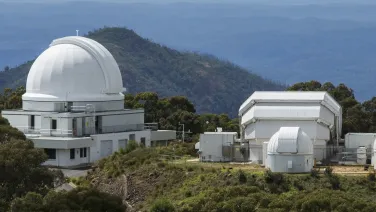
The supersonic recipe for a big star
Donghee is a student from the Master of Astronomy and Astrophysics (Advanced). He shares with us how he’s progressing with his research into star formation.
Do you know how stars are made? I wish I could answer this question for you, but I have some bad news: we don’t really know yet!
In fact, we know very little about star formation. Why are stars made much more slowly than we expected? What is the ratio between the numbers of large and small stars in a galaxy? How differently are the first stars in the Universe forged compared to the stars of today? These are some of the many questions about stars that astrophysicists are trying to solve – including me.
Together with my two supervisors, Associate Professor Christoph Federrath and Professor Mark Krumholz, I am exploring how motions within clouds of hydrogen molecules affect the size of the stars they create.
Let me explain this a little more. Astrophysicists think stars are made inside molecular clouds, which are cold clumps of hydrogen molecules found inside the spiral arms of a galaxy. In these clouds, there are fierce flows, or turbulence, of hydrogen gas, much like a storm cloud. Unlike the Earth's atmosphere, turbulence in molecular clouds is often supersonic, which means there are shock waves everywhere. These shocks sometimes compress the gas so it can form a star, but they can also kick them away. I see this as a love-hate relationship between turbulence and protostars.
This is what we have learnt so far: supersonic turbulence in molecular clouds regulates star formation. What we are not sure about is the detailed mechanisms. Astrophysicists have developed and tested a number of theories to help us understand this process better. One challenge is that all supersonic turbulence is of a similar nature, making it difficult to evaluate these theories.
This is why Professor Krumholz, Associate Professor Federrath and I are creating a molecular cloud and driving the kind of turbulence inside the cloud that you would never see in reality, to see how the theories will perform.
But because a typical molecular cloud is several hundred light years big and creating an actual star is illegal, we are instead performing computational experiments using Raijin, Australia’s most powerful supercomputer.
We have stirred up the gas already, which will then be compressed by supersonic turbulence to form into stars very soon. I’m very excited!
If you too want to uncover the mysteries of the universe, then consider a Master of Astronomy and Astrophysics (Advanced).


